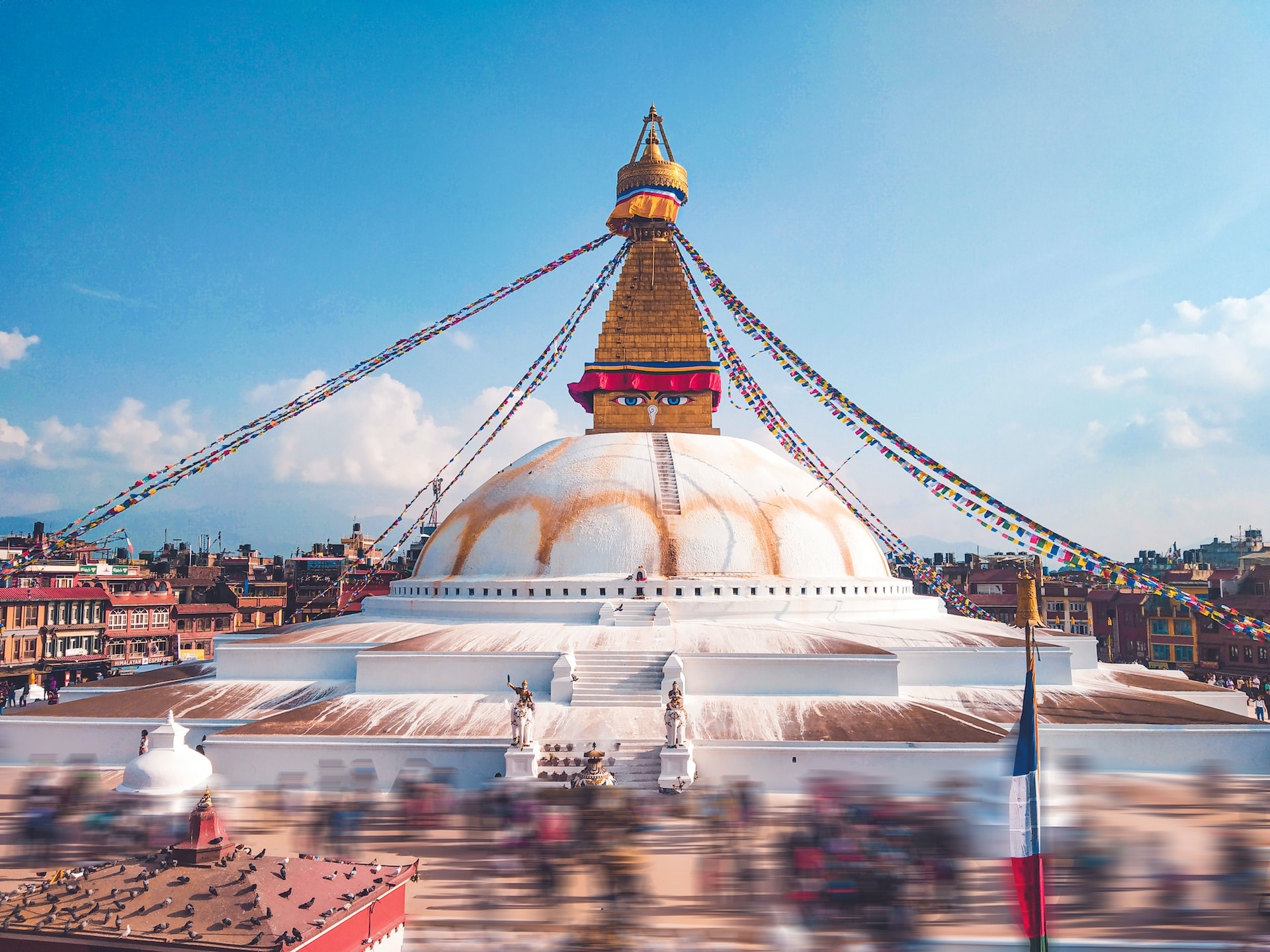| No of people | Price per person |
|---|---|
| 1 - 1 | $1,305 |
| 2 - 4 | $1,125 |
| 5 - 9 | $1,105 |
| 10 - 15 | $1,085 |
| 16 - 20 | $1,065 |





































Your final trekking day leads you back to Lukla, where your adventure began. The path takes you through beautiful forests and past traditional Sherpa villages, allowing you to reflect on your journey. As you arrive in Lukla, celebrate the completion of your trek with your trekking companions. Spend your last night in the mountains enjoying dinner and sharing stories of your adventure.



After breakfast, you’ll take an early morning flight back to Kathmandu. The scenic flight offers a last glimpse of the majestic Himalayas. Upon arrival, you will be transferred back to your hotel. Spend the day at your leisure, perhaps shopping for souvenirs or exploring more of Kathmandu’s cultural sites. In the evening, join a farewell dinner with your trekking group, celebrating the incredible experiences shared.



As your remarkable journey comes to an end, enjoy breakfast at your hotel. Depending on your flight schedule, you may have some time for last-minute sightseeing or shopping. A representative from Sky Treks and Pilgrimages will assist you with your transfer to the airport. We hope you take home unforgettable memories and a desire for your next adventure in the breathtaking Himalayas! Safe travels!



The Everest Base Camp trek was a once-in-a-lifetime experience. The views were breathtaking, and the Sherpa people were incredibly hospitable. Our guide was knowledgeable and made sure we were safe and comfortable throughout the trek. Highly recommend!
This trek was challenging but so rewarding. The scenery was stunning, and reaching Everest Base Camp was an unforgettable moment. The accommodations were comfortable, and the food was great. Our guide and porters were excellent and really made the trip special.
The Everest Base Camp trek is a popular trekking route in the Khumbu region of Nepal, leading adventurers to the base camp of Mount Everest. Spanning approximately 130 kilometers (around 80 miles) round trip, the trek typically takes 12 to 16 days, depending on your acclimatization schedule and itinerary. Trekkers experience breathtaking views, diverse landscapes, and the rich culture of the Sherpa people.
The best times to undertake the trek are in the spring (March to May) and autumn (September to November). During these seasons, the weather is generally stable, with clear skies and mild temperatures, making for optimal trekking conditions. Winter can be very cold and challenging, while the monsoon season brings heavy rainfall and potential landslides, which can disrupt trails.
While it’s possible to trek to Everest Base Camp independently, hiring a guide or joining a guided tour is highly recommended, especially for those with limited trekking experience. Guides can enhance your experience by providing insights into local culture, ensuring your safety, and helping with navigation. Additionally, they can assist with permits and logistical arrangements.
To trek to Everest Base Camp, you’ll need two main permits: the Sagarmatha National Park entry permit and the TIMS (Trekkers' Information Management System) card. These permits can be obtained in Kathmandu or at the park entrance. It’s advisable to arrange them through a trekking agency for convenience and to ensure compliance with local regulations.
The Everest Base Camp trek is considered a moderate to challenging trek. It involves long days of walking, steep ascents, and altitude gains, reaching heights of over 5,300 meters (17,000 feet) at Base Camp. Physical fitness, prior trekking experience, and proper acclimatization are crucial for success. However, many trekkers of varying skill levels complete it successfully with the right preparation.
Packing for the trek requires careful consideration of clothing and gear. Essentials include layered clothing, a good-quality sleeping bag, trekking boots, a waterproof jacket, and warm accessories like gloves and hats. Don’t forget a first-aid kit, trekking poles, a water purification system, and snacks. Additionally, a good camera or smartphone for capturing the stunning scenery is highly recommended.
Accommodation during the Everest Base Camp trek typically consists of teahouses, which offer basic lodgings and meals. While facilities can vary from village to village, most teahouses provide comfortable beds, communal dining areas, and hot showers for an extra fee. The atmosphere is generally friendly and welcoming, giving trekkers a chance to interact with fellow adventurers and local residents.
The trek is generally safe, but it does come with risks, particularly related to altitude sickness. Acclimatization is key to preventing altitude-related issues, so it’s important to ascend gradually and listen to your body. Following the advice of your guide and making sure you’re well-prepared can significantly reduce risks. Additionally, keeping an eye on weather conditions and being aware of your surroundings is crucial.
Teahouses along the trekking route typically serve a variety of food options, including traditional Nepali dishes, Western meals, and snacks. Common offerings include dal bhat (rice and lentils), momos (dumplings), pasta, and soups. While vegetarian options are widely available, it’s advisable to avoid meat in higher-altitude areas for safety reasons.
Preparing for the Everest Base Camp trek involves physical training, such as hiking, running, or cycling, to build endurance and strength. It’s also important to practice trekking with a weighted backpack and to get accustomed to walking on uneven terrain. Familiarizing yourself with altitude sickness symptoms and how to manage them will also help you feel more confident on the trail.
